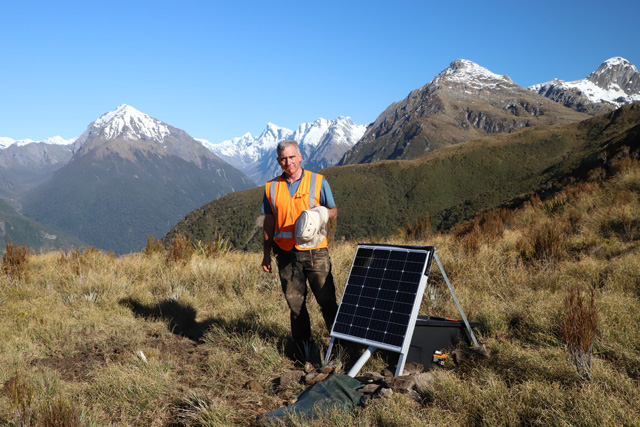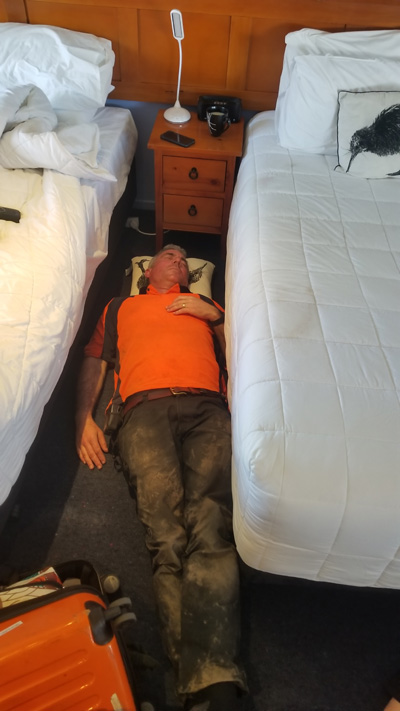15 April 2022–As SSA President, John Townend has been at the helm of the society as it weathered the challenges of a pandemic and a virtual annual meeting, but the past year has led to new insights as well.
“The pandemic has forced us to adapt the ways we meet and share our science, and it’s been inspiring to see seismology flourishing in a largely online world despite the upheaval around us,” he said. “To a large extent, geographic and institutional boundaries have been circumvented very constructively, but at the same time our switch to virtual interactions emphasizes how important meeting in person really is.”

During the pandemic, SSA launched a new open-access journal, The Seismic Record, expanded its virtual training and support opportunities, and established a new Diversity, Equity and Inclusion Committee. “Each of these actions provides an opportunity to think about how SSA works to ensure broader representation and participation from all sectors of society, in its leadership and in its membership at large,” Townend noted.
“For me, a particularly important point has been the appreciation that seismology is rooted in geography,” he added. “In seeking to understand the Earth around us from a scientific standpoint, we need to understand and acknowledge other groups’ relationships to the land also.”
A sense of place has marked Townend’s interest in the earth sciences from the start. He grew up in Rotorua, a volcanic area in the central North Island of New Zealand. “We could see Mount Tarawera—which last erupted in June 1886—from the kitchen window and on still days in winter you’d see pillars of sulfurous cloud rising up from the center of town. The first noteworthy earthquake I remember was in 1987, when the Edgecumbe earthquake [magnitude 6.5, about70 kilometers away] happened while I was running a 100-meter race and the other runners and I started weaving all over the place. So, I guess I could see signs of the Earth in action from quite an early age,” he recalled.
His mother showed him how to draw a topographic cross-section, igniting a lifelong love of maps, and a high school interest in Antarctica drew him to geology as the best way to someday get to the continent (He’s still waiting). After studying geology at the University of Otago, he became more interested in earthquake processes. Today he is a professor of geophysics at Victoria University of Wellington—Te Herenga Waka, studying earthquake mechanics and fault zone structures, among other topics.
For more than a decade, Townend has worked on several projects at the Alpine Fault, which runs about 600 kilometers along the western side of the Southern Alps on New Zealand’s South Island. The Alpine Fault is unusual in terms of its number of large earthquakes (magnitude 8 or larger) that have occurred at regular intervals, typically less than 300 years apart. “I’m really interested in how such regular earthquake behavior emerges from such a geometrically, mechanically and hydrologically complex system. More than 300 years have passed since the Alpine Fault’s last big earthquake in 1717 CE, so we’re well into the tail of this fault’s typical earthquake cycle,” said Townend.
Townend’s most recent project on the fault is the Southern Alps Long Skinny Array (SALSA), which deploys seismic stations every 10 kilometers along a 450-kilometer section of the fault. Among other things, the dense array will record small earthquakes and background noise along the fault with the goals of understanding how the Alpine Fault will rupture in a future large earthquake, and what ground shaking it is likely to produce in urban areas throughout southern New Zealand.
“New Zealand experienced quite a few magnitude 7 or larger earthquakes in the country’s formative 100 years following the signing of the Treaty of Waitangi/Te Tiriti o Waitangi in 1840 between the British crown and Māori chiefs, but many fewer in the second half of the twentieth century,” Townend explained. “I think this meant that, as a society, we were out of practice at dealing with large earthquakes when the 2010 Darfield and 2011 Christchurch earthquakes struck. Especially for things like ongoing aftershocks and liquefaction, there simply wasn’t much collective memory of them.”

Townend enjoys discussing earthquake science with different audiences, he said. “For those of us doing earthquake science, a particular challenge seems to be to understand for ourselves and then to communicate to others how what goes on over decades or centuries is related to the processes occurring over seconds or minutes in an earthquake, and over days, weeks or years afterward.”
“Those very difficult timescales are hard to comprehend, but it’s important that we can convey those messages because it’s the basis for societies preparing for future large earthquakes and then reacting to and recovering from them,” he added.
Townend said one of the biggest developments over the course of his career has been “in how seismologists analyze seismic data, particular via open-source code that’s shared widely. I think this makes it much easier for people joining our field, and it’s meant that new techniques developed in one study can be more readily applied elsewhere.”
Given how much time and energy and money go into acquiring seismic data, he hopes that they will be “analyzed as thoroughly and innovatively as possible.”
“There’s really no obstacle any more to sharing data and tools but perhaps we still have a tendency to focus on a few familiar areas with increasingly sophisticated analyses, dotting i’s and crossing t’s, while other data or areas that provide useful contrasts or the opportunity for fundamentally new insight go largely unstudied,” he said.
SSA At Work is a monthly column that follows the careers of SSA members. For the full list of issues, head to our At Work page.
